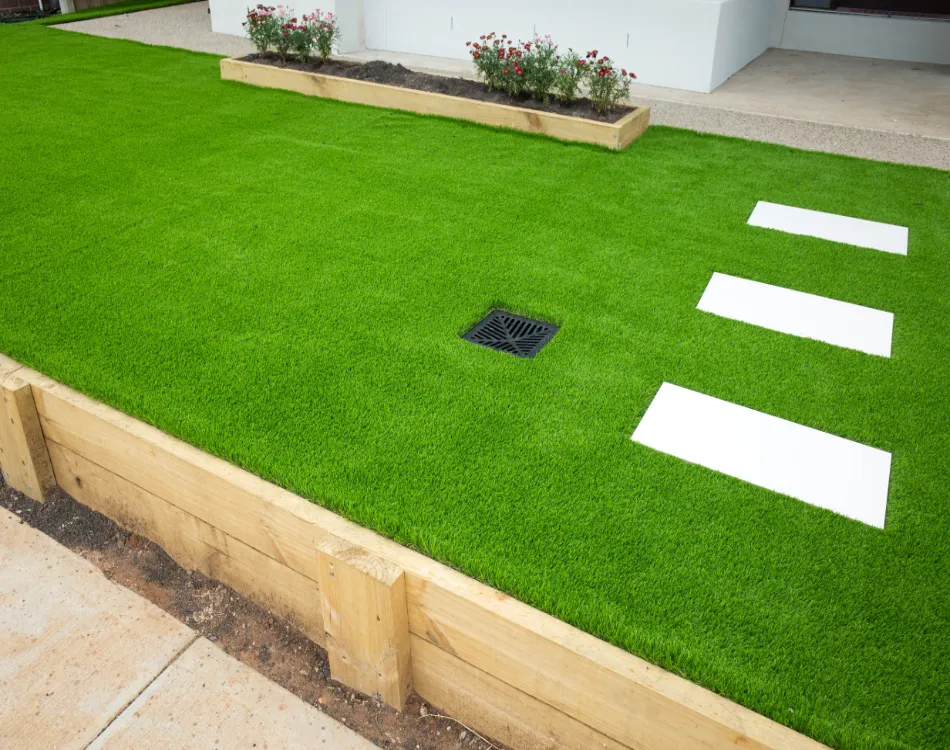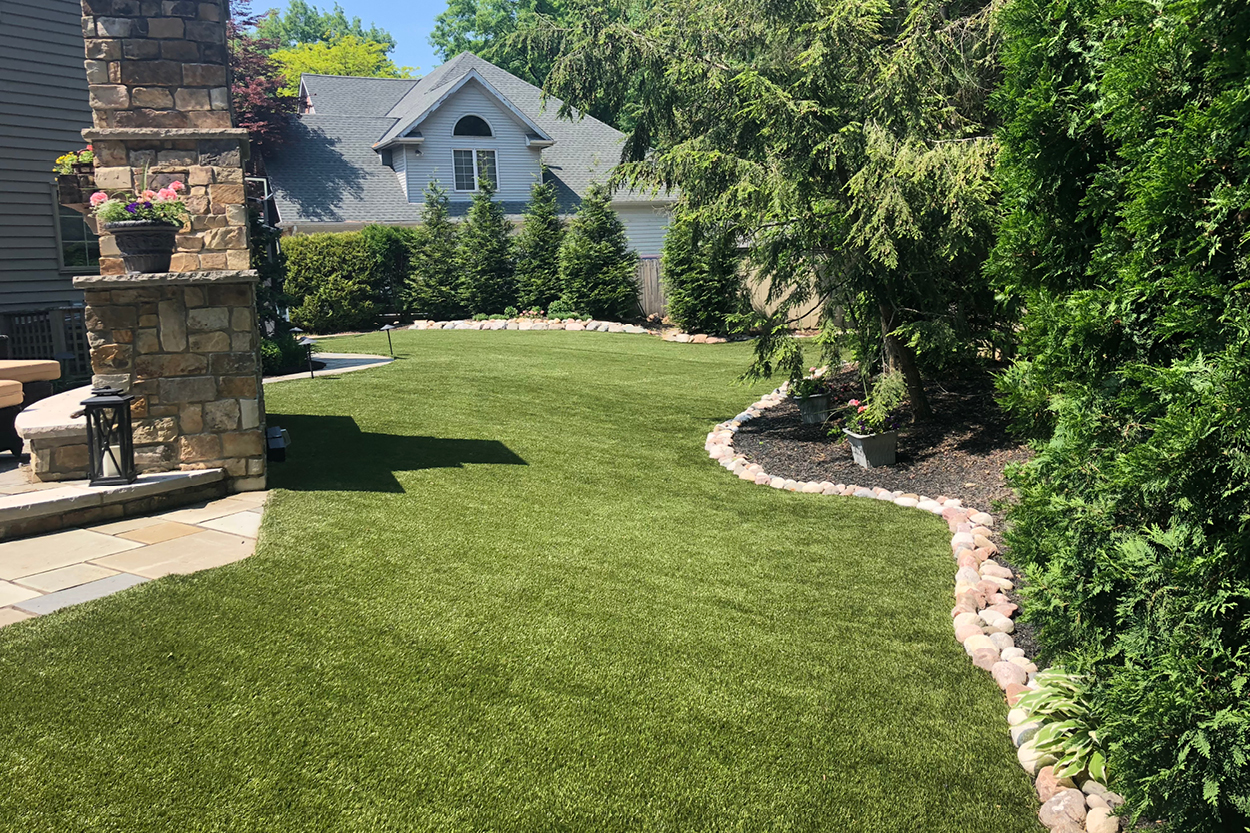Explore the Environmental Advantages of Opting for Artificial Turf Solutions
The adoption of man-made lawn remedies presents a compelling opportunity to deal with pushing ecological difficulties. By dramatically reducing water usage and reducing the application of harmful chemicals, these alternatives not only promote sustainable landscaping but also protect local environments.
Water Preservation Perks
One of the most substantial benefits of artificial lawn is its capacity to save water. In comparison, synthetic turf does not require watering, substantially decreasing the total demand for water sources.
By removing the need for normal watering, fabricated grass contributes to sustainable landscape techniques and helps alleviate the environmental effect of too much water consumption. Additionally, the conservation of water encompasses the decrease of drainage, which can result in dirt disintegration and waterway pollution.
Furthermore, the installment of artificial turf enables property owners and communities to allot water resources a lot more efficiently, concentrating on vital usages such as alcohol consumption water and farming. The change in the direction of artificial grass not only advertises accountable water use however additionally straightens with more comprehensive ecological objectives aimed at preserving natural deposits.
As communities increasingly prioritize sustainability, the water conservation benefits of synthetic grass present an engaging case for its fostering in domestic and commercial landscape design tasks.
Minimized Chemical Use
The transition to artificial grass considerably reduces the dependence on chemical therapies commonly made use of in all-natural yard upkeep. Standard grass management generally includes the application of herbicides, pesticides, and fertilizers to advertise growth and control pests. These chemicals can posture threats to human health and wellness, local wild animals, and the atmosphere, adding to soil and water contamination.
In comparison, artificial lawn eliminates the requirement for these hazardous materials. By reducing the launch of artificial compounds right into the ecosystem, man-made lawn promotes healthier dirt and water systems.
Furthermore, the lack of chemical drainage related to synthetic grass setups helps safeguard neighborhood waterways from contamination, sustaining marine life and maintaining biodiversity. Phoenix turf companies. As areas increasingly prioritize sustainable techniques, going with synthetic grass provides a sensible solution that aligns with environmental conservation goals. With this change, residential or commercial property owners can take pleasure in lush eco-friendly areas without endangering eco-friendly wellness, leading the way for a more sustainable future
Reduced Carbon Impact

Additionally, the setup of synthetic grass can cause significant water preservation. Natural lawns require considerable amounts of water for irrigation, which not only adds to the carbon footprint related to water removal and therapy but additionally stress neighborhood water resources. On the other hand, man-made lawn needs very little upkeep, requiring no watering, thereby substantially lowering water use and its linked energy prices.
Furthermore, the durability of synthetic lawn adds to its reduced carbon impact. With a life-span of up to 15 years or more, the demand for constant replacements is lessened, resulting in less waste and lower power consumption in manufacturing and disposing of conventional turf options. In general, synthetic grass provides a lasting alternative for eco aware landscaping.
Habitat Preservation
Habitat conservation is a critical consideration in the dispute over landscape design selections, specifically when contrasting synthetic grass to all-natural lawn. Natural turf lawns typically need extensive upkeep, consisting of making use of pesticides, fertilizers, and herbicides, which can adversely impact neighborhood ecosystems. These chemicals can leach into the soil and waterways, damaging native vegetation and fauna and interfering with neighborhood environments.
In comparison, artificial lawn offers a possibility to lower the environmental footprint of landscape design. By choosing artificial turf, homeowners can minimize the disruption of natural habitats related to traditional yard care techniques. Man-made grass eliminates the need for unsafe chemicals, therefore shielding neighboring wild animals and preserving the integrity of bordering ecosystems. In addition, the setup of check these guys out fabricated lawn can result in the conversion of previous lawn locations into more biodiverse landscapes, such as pollinator gardens or native plant locations, which can support regional wild animals.
Ultimately, the shift to synthetic grass not only preserves read review water and minimizes maintenance initiatives however additionally cultivates a more unified relationship in between human tasks and the natural surroundings, advertising habitat conservation at the same time.
Long-Term Sustainability
Lasting sustainability is an essential element in assessing the advantages of fabricated lawn over traditional grass yards. One of one of the most significant advantages of fabricated lawn is its longevity; it can last as much as 15-20 years with minimal upkeep, whereas natural turf requires regular reseeding and replacement. This durability reduces the need for continuous sources, such as water, fertilizers, and chemicals, which are essential for preserving a healthy and balanced grass yard.
Furthermore, synthetic grass contributes to a reduction in carbon exhausts related to grass treatment devices. Traditional grass typically require gas-powered lawn mowers, leaners, and blowers, every one of which add to air pollution. Arizona artificial turf. In contrast, synthetic grass removes the need for such equipment, advertising a cleaner atmosphere
Moreover, the manufacturing of fabricated turf significantly makes use of recycled materials, improving its sustainability account. As manufacturers embrace eco-friendly techniques, the environmental footprint of artificial turf proceeds to decrease.

Conclusion
The adoption of artificial lawn remedies provides substantial ecological advantages, consisting of substantial water preservation, decreased reliance on hazardous chemicals, and a lower carbon footprint. Man-made lawn help in maintaining all-natural environments by lessening land disruption and promoting long-term sustainability via the usage of resilient materials. Collectively, these aspects underscore the potential of synthetic turf to add favorably to ecological wellness news and supply a practical option to typical landscape design practices in a progressively resource-conscious world.
In comparison, synthetic lawn does not require watering, substantially minimizing the general demand for water resources. By minimizing the release of artificial substances right into the ecosystem, man-made turf advertises much healthier soil and water systems.
Furthermore, the setup of synthetic lawn can result in considerable water preservation. In comparison, artificial lawn requires minimal maintenance, requiring no watering, thereby significantly reducing water use and its connected energy costs.
